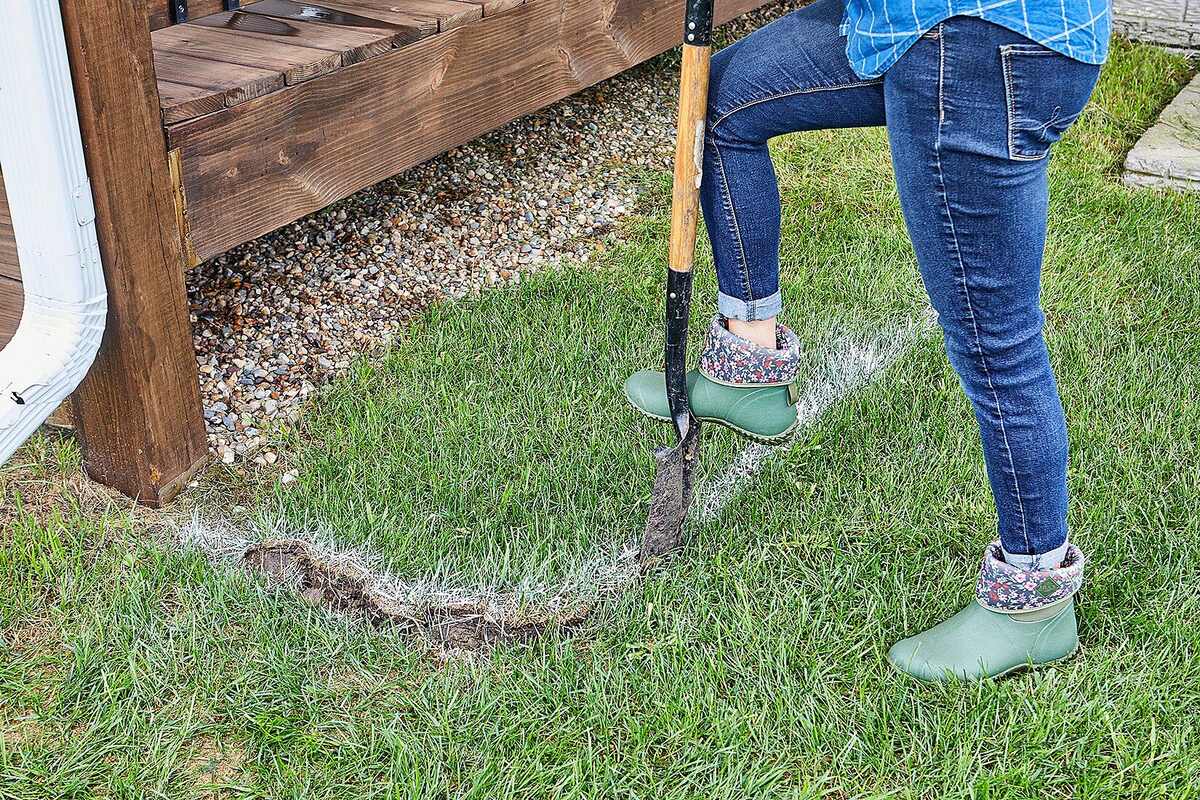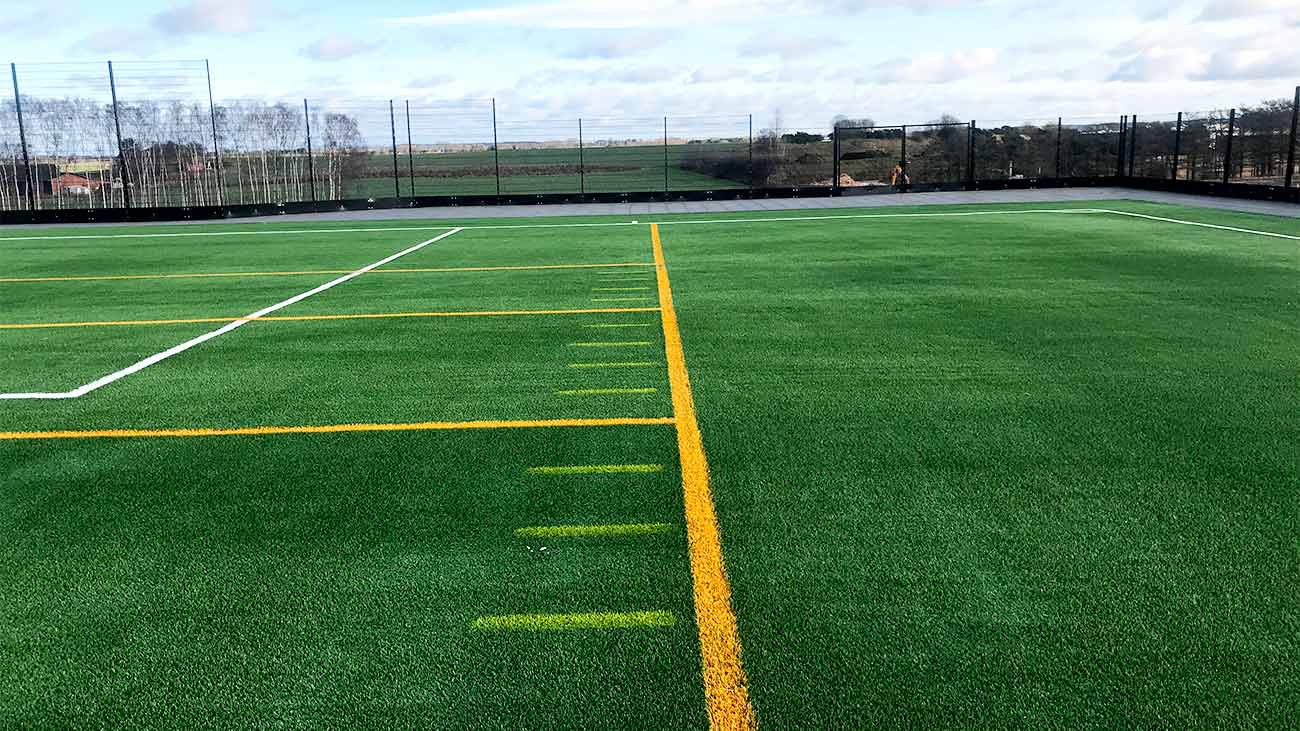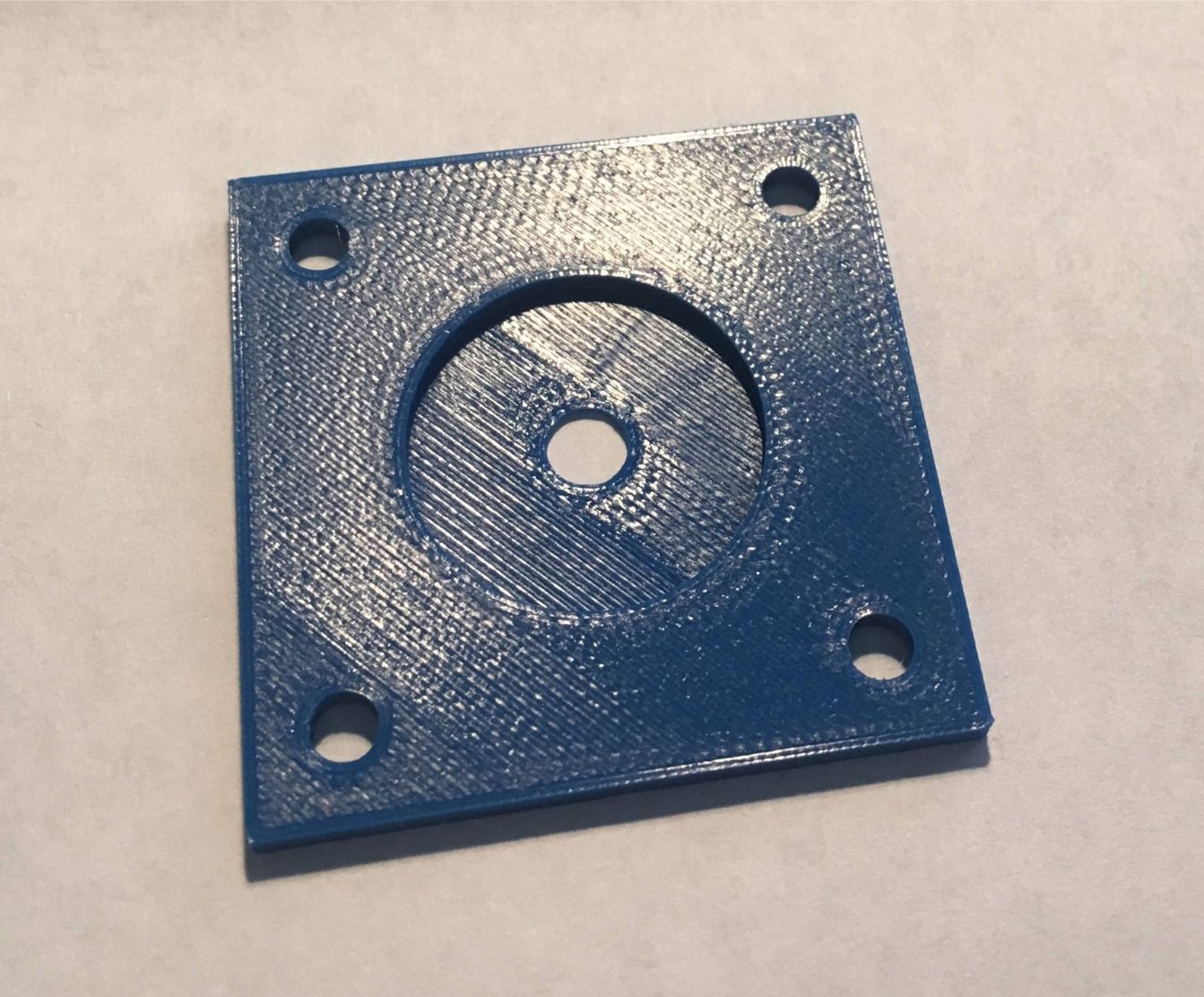Home>Gardening & Outdoor>Landscaping Ideas>How To Change Grass


Landscaping Ideas
How To Change Grass
Published: January 25, 2024
Learn effective landscaping ideas for changing grass and transforming your outdoor space. Discover step-by-step guidance and expert tips. Achieve the perfect lawn!
(Many of the links in this article redirect to a specific reviewed product. Your purchase of these products through affiliate links helps to generate commission for Storables.com, at no extra cost. Learn more)
Introduction
Welcome to the ultimate guide on how to change the grass in your lawn. Whether you’re looking to revamp your yard or address persistent issues with your current grass, this comprehensive resource will walk you through the process step by step. Changing the grass in your lawn can breathe new life into your outdoor space, improve curb appeal, and create a lush, vibrant landscape for relaxation and recreation.
Before diving into the transformation of your lawn, it’s essential to understand the factors that contribute to a successful grass change. From assessing the current state of your lawn to selecting the right type of grass and executing proper planting and maintenance techniques, each stage plays a crucial role in the overall outcome. By following the guidance provided here, you’ll be equipped with the knowledge and confidence to achieve a stunning and healthy lawn transformation.
Embark on this journey with an open mind and a readiness to embrace the rewarding process of nurturing a flourishing lawn. Let’s delve into the key steps involved in changing the grass in your yard and unlock the potential for a greener, more inviting outdoor space.
Key Takeaways:
- Choose the right grass by considering climate, soil, sunlight, and usage. Consult local experts for the best species suited to your region and lawn needs.
- Prepare the soil thoroughly by clearing, aerating, testing, leveling, fertilizing, and watering. This sets the stage for successful grass growth and establishment.
Read more: How To Change The Grass In Your Yard
Assessing Your Lawn
Before initiating a grass change, it’s crucial to conduct a thorough assessment of your lawn to determine its current condition and the underlying factors contributing to the need for a grass transformation. Start by examining the existing grass to identify any prevalent issues such as patchy growth, discoloration, weed infestation, or poor resilience to environmental conditions.
Take note of the following aspects during your assessment:
- The type of grass currently present in your lawn
- Areas of sparse or uneven growth
- Weed and pest infestations
- Soil quality and composition
- Drainage patterns and water retention
By understanding these factors, you can pinpoint the specific challenges that need to be addressed when transitioning to new grass. Additionally, consider the local climate and environmental conditions to select grass varieties that are well-suited to thrive in your region.
Furthermore, assess the level of foot traffic and sun exposure in different areas of your lawn. High-traffic zones may require more durable grass varieties, while shaded areas might benefit from shade-tolerant species. This comprehensive evaluation will guide your decision-making process when choosing the most suitable grass for your lawn.
It’s also advisable to perform a soil test to analyze its pH levels and nutrient content. This information will help determine if any soil amendments are necessary to create an optimal environment for the new grass to flourish. Additionally, addressing soil deficiencies prior to planting new grass can significantly enhance its growth and overall health.
By thoroughly assessing your lawn and considering all relevant factors, you’ll be well-prepared to make informed decisions regarding the type of grass to introduce and the necessary preparations to ensure its successful establishment.
Choosing the Right Grass
When it comes to changing the grass in your lawn, selecting the right grass species is a pivotal decision that significantly impacts the overall success of the transformation. The ideal grass variety for your lawn depends on several factors, including climate, soil type, sun exposure, and anticipated usage of the lawn.
Consider the following key aspects when choosing the right grass for your lawn:
- Climate Compatibility: Different grass species thrive in specific climate zones. Determine if your region experiences predominantly cool or warm seasons, as this will influence the selection of cool-season or warm-season grasses. Additionally, consider the average annual rainfall and temperature fluctuations to identify grass varieties that are well-adapted to your local climate.
- Soil Conditions: Assess the composition and drainage of your soil to choose grass species that can thrive in the existing soil conditions. Some grasses are more tolerant of compacted or sandy soils, while others require well-draining loamy soil.
- Sunlight and Shade: Evaluate the sun exposure in different areas of your lawn. Select grass varieties that align with the sunlight levels, ensuring optimal growth in both sunny and shaded regions. Shade-tolerant grasses are essential for areas with limited direct sunlight.
- Intended Use: Consider the primary purpose of your lawn. If it will serve as a play area for children and pets, opt for durable, resilient grass varieties that can withstand heavy foot traffic. For ornamental lawns, prioritize aesthetics and choose grass types that offer lush, fine-textured blades.
Consult local gardening experts, nurseries, or agricultural extension services to gather insights on the most suitable grass species for your specific region. Additionally, consider seeking recommendations from neighbors or community members who have successfully cultivated healthy lawns with grass varieties that align with your environmental conditions.
By carefully evaluating these factors and understanding the unique characteristics of different grass species, you can make an informed decision when selecting the right grass for your lawn. The chosen grass variety should not only thrive in your local environment but also fulfill the aesthetic and functional requirements of your outdoor space.
Preparing the Soil
Effective soil preparation is a critical precursor to successfully changing the grass in your lawn. By ensuring that the soil is adequately conditioned and nourished, you create an optimal foundation for the new grass to take root and thrive. The following steps will guide you through the process of preparing the soil for the upcoming grass transformation:
- Clearing the Area: Begin by removing any existing debris, including rocks, weeds, and remnants of the previous grass. This clears the ground and minimizes potential obstructions to the new grass’s growth.
- Aerating the Soil: Utilize a garden fork or mechanical aerator to perforate the soil, promoting better air circulation and water absorption. Aeration also alleviates soil compaction, enhancing the soil’s overall structure and fertility.
- Soil Testing: Conduct a comprehensive soil test to evaluate the pH levels and nutrient composition. Based on the test results, amend the soil with organic matter, such as compost or well-rotted manure, to enrich its fertility and improve its texture.
- Leveling the Ground: Use a garden rake to level the soil surface, ensuring uniformity and smoothness across the entire lawn area. This step facilitates even grass growth and mowing in the future.
- Applying Fertilizer: Depending on the soil test findings, apply a balanced fertilizer to provide essential nutrients for the new grass’s initial growth. Follow the recommended application rates and ensure thorough incorporation of the fertilizer into the soil.
- Watering the Soil: Prior to planting the new grass, thoroughly water the prepared soil to achieve adequate moisture levels. This primes the soil for receiving the grass seeds or sod, promoting germination and early establishment.
By meticulously executing these soil preparation steps, you create a fertile, well-structured environment that optimizes the prospects of successful grass establishment. The investment of time and effort in soil preparation significantly contributes to the long-term health and vibrancy of your revitalized lawn.
Tip: To change grass, first remove existing grass by tilling or using a sod cutter. Prepare the soil by adding compost and leveling it. Then, lay new sod or sow grass seed according to the recommended method for your specific grass type. Keep the area well-watered until the new grass is established.
Planting the New Grass
With the soil primed and ready, it’s time to embark on the exciting phase of planting the new grass in your lawn. Whether you opt for seeding or sodding, the following guidelines will ensure a smooth and effective grass planting process, setting the stage for healthy and vigorous grass growth:
- Seeding: If you choose to establish your new lawn from seed, carefully follow the recommended seeding rates for the specific grass species you’ve selected. Using a broadcast spreader, evenly distribute the grass seed across the prepared soil, taking care to cover the entire area with a uniform layer of seeds.
- Sodding: For an accelerated lawn establishment, sodding offers the advantage of immediate coverage and reduced vulnerability to erosion. Lay the sod in a staggered pattern, pressing the edges firmly together to eliminate gaps and ensure seamless integration with the soil.
- Watering: After seeding or sodding, thoroughly water the lawn to facilitate seed germination or sod root establishment. Ensure that the soil remains consistently moist during the initial stages of grass growth, promoting strong root development and overall resilience.
- Applying Mulch (for Seeding): If seeding, consider applying a thin layer of mulch over the seeded area to retain moisture and protect the seeds from birds and environmental stress. This encourages optimal conditions for germination and early seedling growth.
- Establishing a Watering Schedule: Develop a regular watering schedule to sustain the newly planted grass. Adequate hydration is crucial for the initial establishment phase, and it’s essential to monitor soil moisture levels to prevent under- or overwatering.
- Implementing Erosion Control Measures: To safeguard the newly planted grass from erosion, consider using erosion control blankets or netting in areas prone to soil displacement. This helps stabilize the soil and protects the developing grass from environmental disturbances.
By diligently following these planting guidelines, you provide the new grass with the best possible conditions for successful establishment. Whether seeding or sodding, each method offers unique advantages and, when executed with care, sets the stage for a vibrant, resilient lawn that enhances the beauty of your outdoor space.
Read more: How To Change Infill On Makerbot
Watering and Maintenance
Once the new grass has been planted, the subsequent watering and maintenance practices play a pivotal role in nurturing its growth and ensuring long-term vitality. By adhering to proper watering schedules and implementing essential maintenance tasks, you can foster a thriving lawn that becomes the focal point of your outdoor landscape. The following guidelines will assist you in effectively managing the watering and maintenance requirements of your newly planted grass:
- Initial Watering: Immediately after planting, provide ample water to the newly seeded or sodded lawn. Ensure that the soil remains consistently moist, promoting optimal conditions for seed germination or sod root establishment.
- Establishing a Watering Schedule: Develop a watering schedule that aligns with the specific needs of the newly planted grass. During the initial growth phase, frequent, light watering is essential to support root development. As the grass matures, transition to deeper, less frequent watering to encourage robust root systems.
- Monitoring Soil Moisture: Regularly assess the moisture levels of the soil to prevent under- or overwatering. Adjust the watering frequency and duration based on environmental conditions, such as rainfall and temperature, to maintain an optimal balance of soil moisture.
- Mowing Practices: Once the new grass reaches a sufficient height, implement regular mowing at the recommended height for the specific grass species. Avoid cutting more than one-third of the grass blade length in a single mowing session to prevent stress and maintain the lawn’s health.
- Fertilization: Apply a balanced fertilizer at the appropriate times to provide essential nutrients for the ongoing growth and vitality of the grass. Follow recommended fertilization schedules and application rates to support the long-term health of your lawn.
- Weed Control: Vigilantly monitor the lawn for weed growth and promptly address any invasive plants. Utilize targeted weed control methods to prevent weed competition and preserve the integrity of the newly established grass.
- Pest and Disease Management: Stay attentive to signs of pest infestations or disease development in the grass. Implement preventive measures and, if necessary, seek professional guidance to address potential threats to the lawn’s well-being.
By adhering to these watering and maintenance practices, you contribute to the sustained health and beauty of your newly transformed lawn. Consistent care and attention to the evolving needs of the grass ensure that it flourishes into a lush, resilient landscape that enhances your outdoor living experience.
Conclusion
Congratulations on embarking on the journey to change the grass in your lawn. By following the comprehensive guidance provided in this article, you have gained valuable insights into the essential steps involved in achieving a successful grass transformation. Your commitment to creating a vibrant, healthy lawn sets the stage for an outdoor space that invites relaxation, recreation, and natural beauty.
Throughout the process, you have assessed the current state of your lawn, carefully selected the most suitable grass species, diligently prepared the soil, and skillfully planted the new grass to initiate its growth. As you continue to nurture and maintain your revitalized lawn, your dedication to proper watering, mowing, fertilization, and pest control practices will contribute to the long-term flourishing of the grass.
Remember that the journey to a stunning lawn is an ongoing endeavor, requiring patience, attentiveness, and a genuine passion for cultivating outdoor beauty. Embrace the evolving seasons and the dynamic nature of your lawn, adapting your care and maintenance practices to align with its changing needs.
As your newly transformed lawn matures and thrives, it will become a source of pride and joy, enriching your outdoor living space and providing a tranquil sanctuary for relaxation and enjoyment. The lush, vibrant grass will beckon you outdoors, offering a refreshing retreat and a canvas for cherished moments with family and friends.
May your lawn transformation project yield bountiful rewards, fostering a deep connection with nature and enhancing the visual appeal of your home. Embrace the journey, celebrate the milestones, and revel in the beauty of your flourishing, rejuvenated lawn.
Wishing you abundant growth, resilience, and natural splendor in your newly transformed grassy haven.
Frequently Asked Questions about How To Change Grass
Was this page helpful?
At Storables.com, we guarantee accurate and reliable information. Our content, validated by Expert Board Contributors, is crafted following stringent Editorial Policies. We're committed to providing you with well-researched, expert-backed insights for all your informational needs.















0 thoughts on “How To Change Grass”